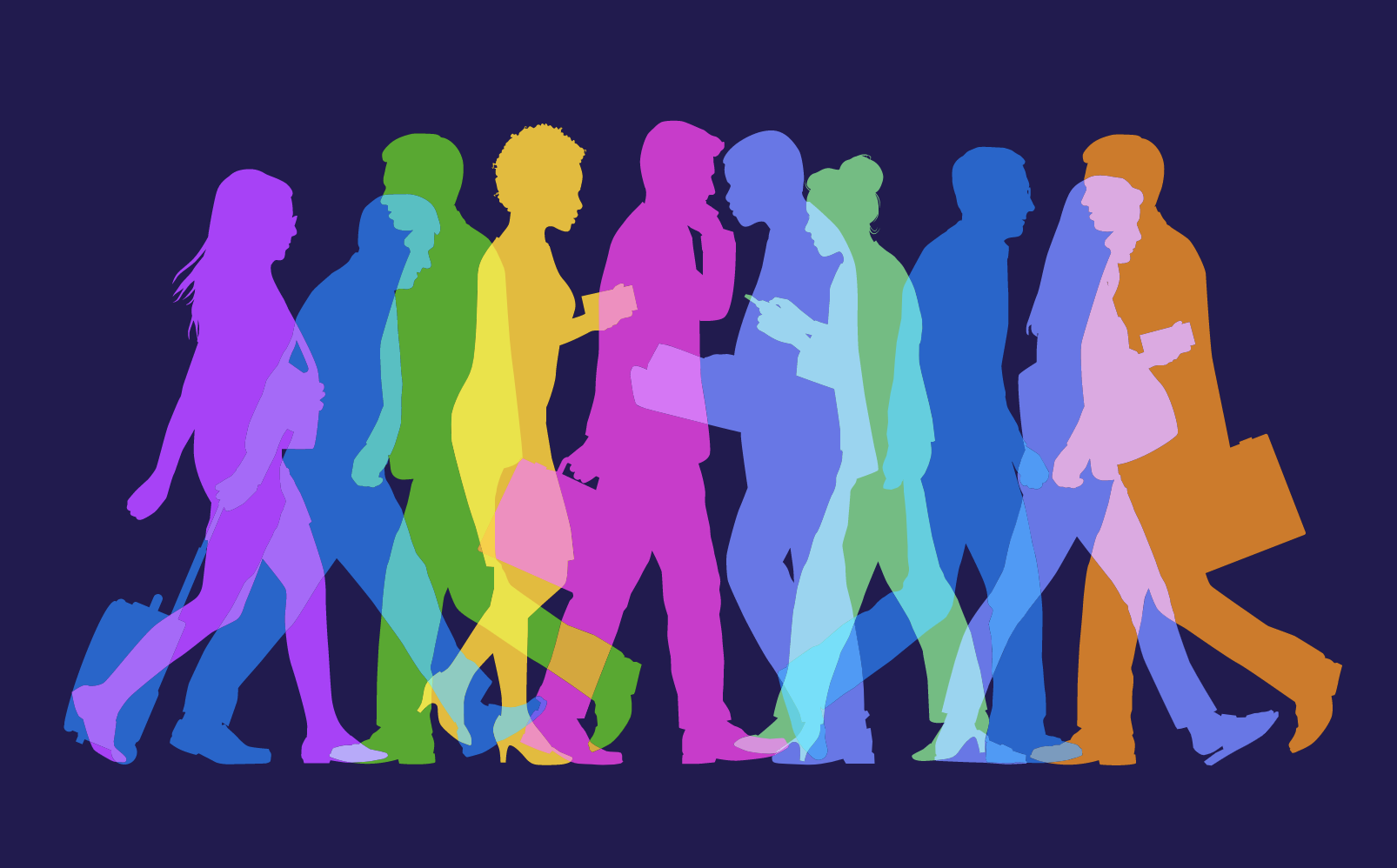Diversity in the media is critical to a functioning democracy. In 1827, editors at the Freedom’s Journal, the first African American owned and operated newspaper in the U.S., declared in the paper’s founding mission statement,“We wish to plead our own cause. Too long have others spoken for us.” In short, one voice cannot speak for all.
However, annual surveys conducted by the American Society of News Editors (ASNE) and the Radio Television Digital News Foundation (RTDNF) show that news media professionals simply do not reflect the overall diversity of our country. The vast majority of our journalists are white men. Moreover, they increasingly reside in urban centers on the coasts of the country.
Diversity comes in many forms: racial, ethnic, gender, ideological, ability, geographic, and economic and the inclusion of other underrepresented communities to name a few. Fair coverage of all diverse communities ceases to exist if there is only one dominant voice telling the American story. Even well intentioned coverage can suffer from bias when we only tell a story through one lens.
Through the Local News & Participation systems map, Democracy Fund has described how “the decreasing diversity of sources, stories, and staff reduces the quantity, quality, and relevance of local journalism. This diminishes the engagement of the public in civic affairs and newsrooms. As the public becomes less engaged with the newsroom, it becomes more isolated, and diversity of sources, stories, and staff continues to dwindle.” For this reason, Democracy Fund is committed to working to support more diverse and inclusive journalism.
The Democracy Fund recently completed a field analysis of organizations working to support and expand diversity and inclusivity in media. The goal of this effort was to better map and understand the broader field and identify new ways to change the systems that shape our media. We’ve shared highlights from analysis and our process below.
What Do We Know?
The American Society of News Editors (ASNE) and the Radio Television Digital News Association (RTDNA) both keep track of diversity in the media through annual surveys. In their 2016 survey, ASNE received responses from 737 news publications (online and print) in the U.S. The results showed that minorities (defined by ASNE as black, Asian American, Hispanic, and Native American employees) consisted of 17 percent of the newsroom workforce.
The most recent RTDNA/Hofstra University survey on diversity in radio and television was published in July of 2016. The survey included responses from 1,286 television stations and 484 radio stations in the U.S., and found that minorities represent 23 percent of the workforce at TV stations. At radio stations, minorities comprise a mere nine percent of the radio workforce.
Women represent 44.2 percent of the TV news station workforce, according to the RTDNA study. While specific numbers were not given for radio overall, the survey noted that there were twice as many men as women in radio. Representation in newsroom leadership is a particular issue. Minorities make up only 5.6 percent of general managers at non-Hispanic TV stations, while women make up only of 18.9 percent of TV general managers.
Who is Working for Media Diversity?
So far, we have identified more than 50 organizations that have a strong commitment, mission, or purpose to expand diversity in the media and build newsrooms that reflect their communities. Many of these organizations are over 20 years old, and some date back further than that. While the circumstances of the industry have slowly improved, more work must be done.
In 1968, the Kerner Commission reported that the number of black journalists employed by the news media was “less than five percent.” Today, black journalists only constitute 4.68 percent of newsrooms, according to ASNE’s 2016 survey. To better serve communities, every news organization or publication providing information must make a commitment to diversity not only to reflect their audiences but to retain them.
To provide organization and structure to our analysis, we categorized the organizations working to improve diversity under the headers membership, research, advocacy, or training organizations – though many organizations provide several of these functions.
Membership organizations include those organizations that serve a specific and diverse group of journalists. Those organizations include groups such as: National Association of Black Journalists (NABJ), National Association of Hispanic Journalists (NAHJ), and Association of Women in Sports Media (AWSM). These organizations host annual conferences and regional convenings throughout the year that offer workshops, careers fairs, and seminars for their members.
Research organizations conduct both qualitative and quantitative research on diversity in the media. Organizations such as the Media Diversity Forum at Louisiana State University and the Institute for Rural Journalism and Community Issues are dedicated to researching issues about the practice of diversity in the media. As noted above, RTDNA and ASNE have annual diversity surveys that are used as a reference point for media.
Advocacy organizations advocate for various causes related to diversity in the media. Women’s Media Center and Women, Action, & the Media, known as WAM!, both advocate for the image of and prosperity of women in the news media. All Digitocracy and Journal-isms both produce content that discusses the journalism industry’s practices. The latest diverse hirings, firings, and news pertaining to ethnic media are available on these organizations’ sites.
Training organizations educate and further develop the skills of minority journalists, aiding in the creation of a pipeline for minority professionals into the news industry. Examples of these organizations include the Robert C. Maynard Institute for Journalism Education (MIJE), T. Howard Foundation, and Emma Bowen Foundation.
Collaboration is key amongst these field-building organizations and with news outlets. Working together helps these organizations accomplish their mission and strategic goals.
Moving Forward
These 50 organizations can provide many services to legacy and non-legacy news media. Utilizing these organizations to reevaluate outlets’ approaches to diversity, including their hiring processes, can protect integrity in journalism and our country’s democracy.
Because of organizations such as Writers of Color and Journalism Diversity Project, which maintain a database of diverse groups of journalists and their skill sets, media outlets can no longer claim they are unable to find “qualified minorities” as a valid excuse for their lack of diversity. Journalism can better engage and reflect the public if journalists, field building organizations, and news outlets continue to work in tandem.
By doing so, we are another step closer to ensuring diverse voices are not only being heard, seen, and read in the media, but are also creating the media content which contributes to our marketplace of ideas. The events of the 2016 election year has only reinforced this. It has become clear since the election that many across the country have felt ill-represented, spoken down to and misunderstood by fly-in journalists. In many ways middle america’s experience in 2016 and response has deep parallels with the experience of minority communities over decades.
Surmounting the barriers of accessibility for the widest range of diverse and minority talent in order to better reflect the composition of the American population will be an arduous, continuous effort that should evolve in tandem with the nation’s changing demographics. Yet, such an effort is paramount if the media is to adequately serve and inform the public square.
***
Taylor T. Harris is an intern with the Public Square Program at Democracy Fund. Taylor joined the Democracy Fund in September 2016 following her completion of her undergraduate degree. She graduated magna cum laude receiving her B.A. in Print/Online Journalism from Howard University. While completing her undergraduate degree Taylor was active in various media and community service organizations on campus including acting as Editor-in-Chief of her college’s newspaper, The Hilltop. Taylor has worked at organizations such as The Dallas Morning News and The Washington Post, and freelanced for organizations such as American Press Institute and USA Today. She also received fellowships from ProPublica, Online News Association, National Association of Black Journalists, and Investigative Editors and Reporters.



